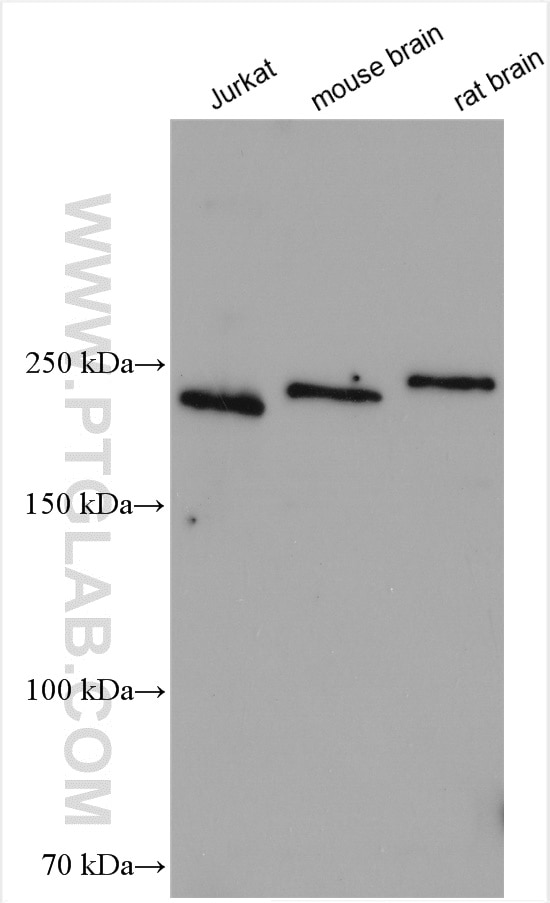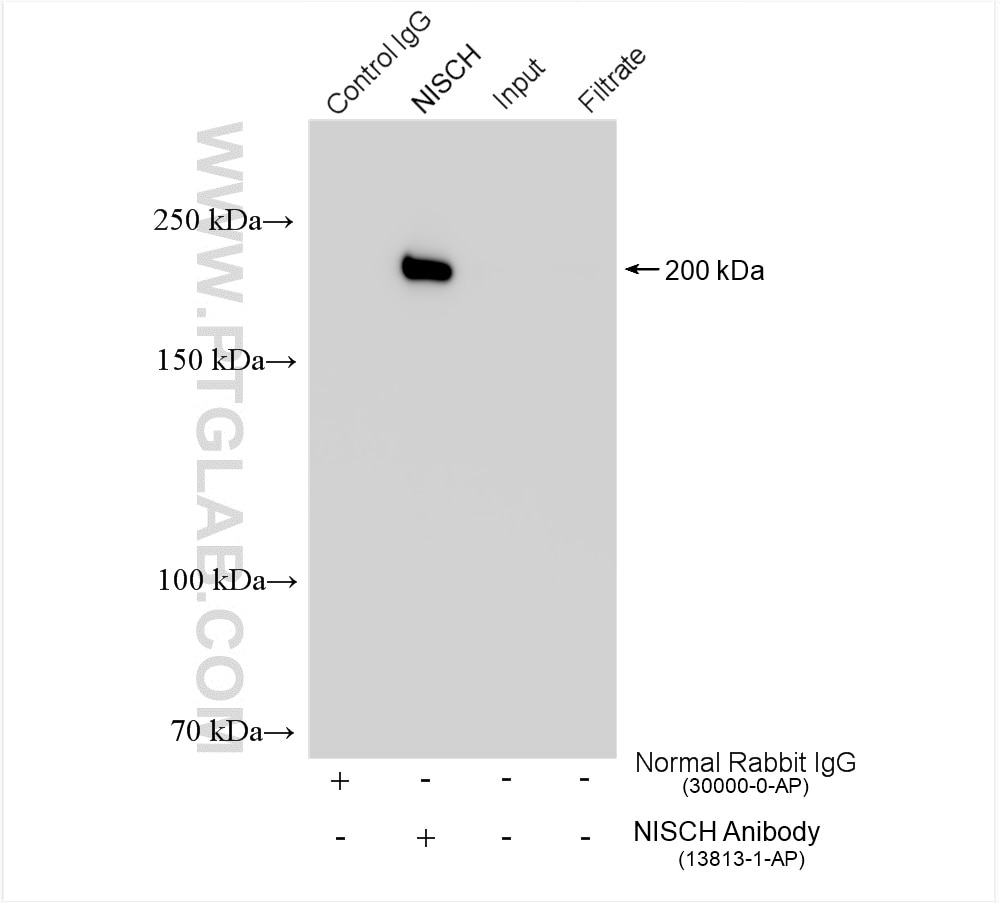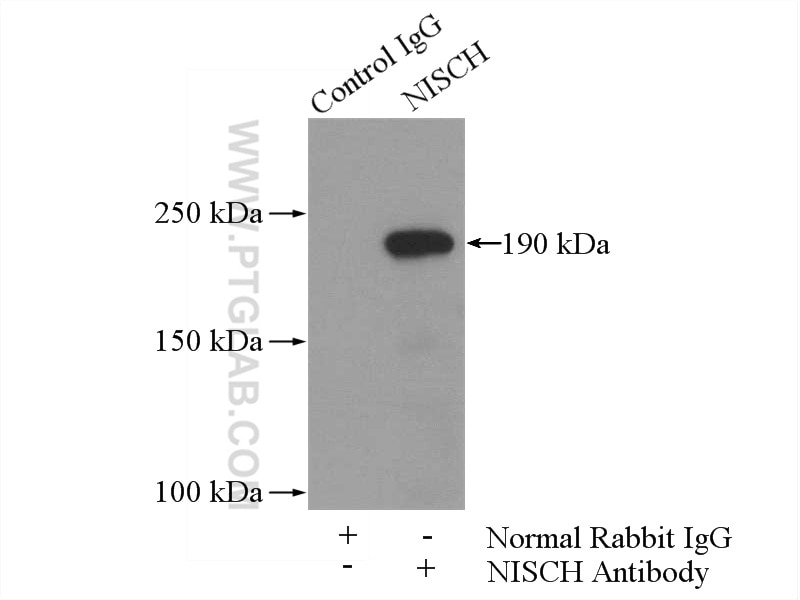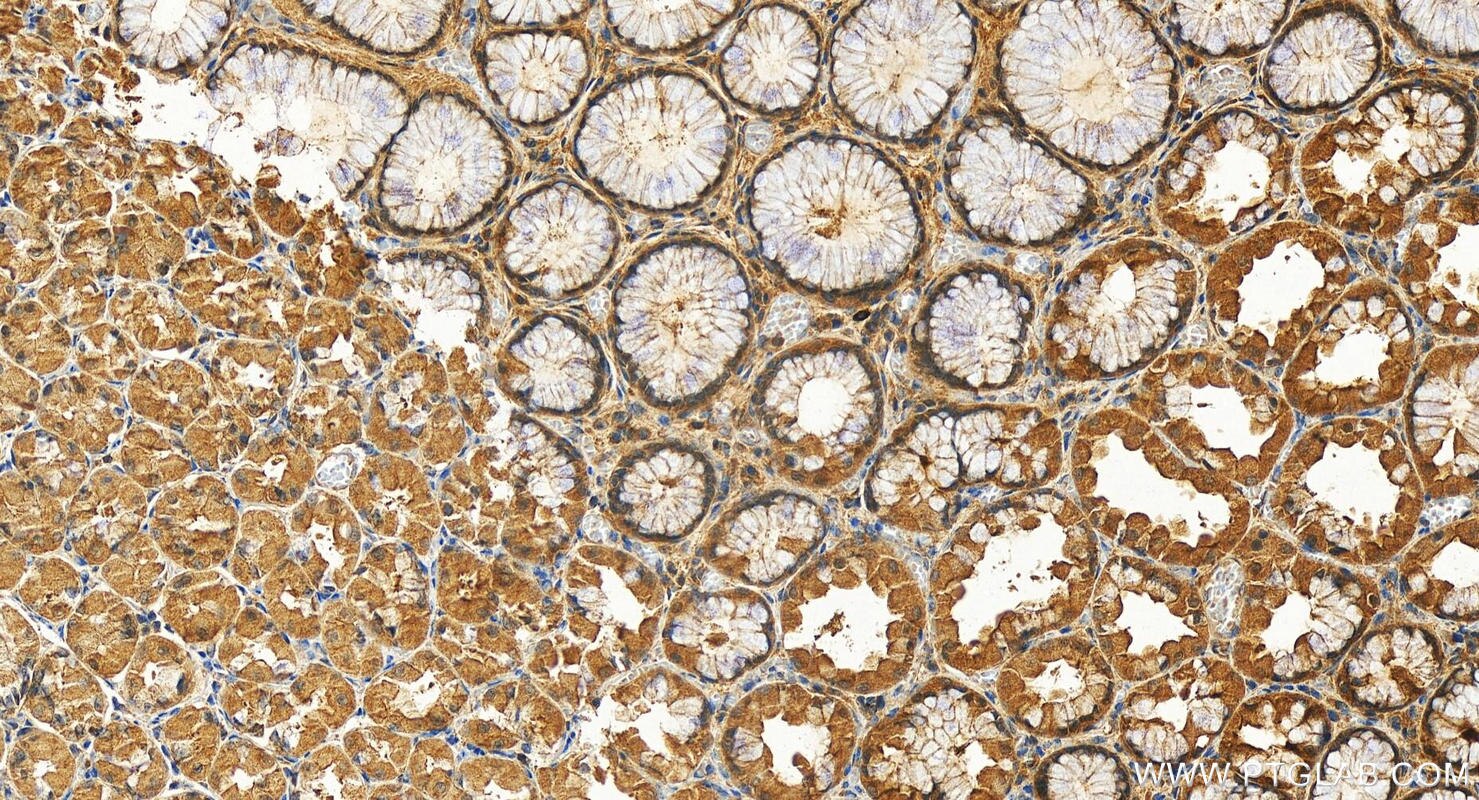Validation Data Gallery
Tested Applications
| Positive WB detected in | Jurkat cells, mouse brain tissue, rat brain tissue |
| Positive IP detected in | Jurkat cells, mouse brain tissue |
| Positive IHC detected in | human stomach tissue Note: suggested antigen retrieval with TE buffer pH 9.0; (*) Alternatively, antigen retrieval may be performed with citrate buffer pH 6.0 |
Recommended dilution
| Application | Dilution |
|---|---|
| Western Blot (WB) | WB : 1:500-1:1000 |
| Immunoprecipitation (IP) | IP : 0.5-4.0 ug for 1.0-3.0 mg of total protein lysate |
| Immunohistochemistry (IHC) | IHC : 1:50-1:500 |
| It is recommended that this reagent should be titrated in each testing system to obtain optimal results. | |
| Sample-dependent, Check data in validation data gallery. | |
Published Applications
| WB | See 2 publications below |
| IF | See 2 publications below |
Product Information
13813-1-AP targets NISCH in WB, IHC, IF, IP, ELISA applications and shows reactivity with human, mouse, rat samples.
| Tested Reactivity | human, mouse, rat |
| Cited Reactivity | human, mouse |
| Host / Isotype | Rabbit / IgG |
| Class | Polyclonal |
| Type | Antibody |
| Immunogen |
CatNo: Ag4880 Product name: Recombinant human NISCH protein Source: e coli.-derived, PGEX-4T Tag: GST Domain: 1155-1504 aa of BC038102 Sequence: NEELRHLMWSSVVFYQTPGLEVTACVLLSTKAVYFVLHDGLRRYFSEPLQDFWHQKNTDYNNSPFHISQCFVLKLSDLQSVNVGLFDQHFRLTGSTPMQVVTCLTRDSYLTHCFLQHLMVVLSSLERTPSPEPVDKDFYSEFGNKTTGKMENYELIHSSRVKFTYPSEEEIGDLTFTVAQKMAEPEKAPALSILLYVQAFQVGMPPPGCCRGPLRPKTLLLTSSEIFLLDEDCVHYPLPEFAKEPPQRDRYRLDDGRRVRDLDRVLMGYQTYPQALTLVFDDVQGHDLMGSVTLDHFGEVPGGPARASQGREVQWQVFVPSAESREKLISLLARQWEALCGRELPVELTG 相同性解析による交差性が予測される生物種 |
| Full Name | nischarin |
| Calculated molecular weight | 1504 aa, 167 kDa |
| Observed molecular weight | 190-200 kDa |
| GenBank accession number | BC038102 |
| Gene Symbol | NISCH |
| Gene ID (NCBI) | 11188 |
| RRID | AB_10693526 |
| Conjugate | Unconjugated |
| Form | |
| Form | Liquid |
| Purification Method | Antigen affinity purification |
| UNIPROT ID | Q9Y2I1 |
| Storage Buffer | PBS with 0.02% sodium azide and 50% glycerol{{ptg:BufferTemp}}7.3 |
| Storage Conditions | Store at -20°C. Stable for one year after shipment. Aliquoting is unnecessary for -20oC storage. |
Protocols
| Product Specific Protocols | |
|---|---|
| IHC protocol for NISCH antibody 13813-1-AP | Download protocol |
| IP protocol for NISCH antibody 13813-1-AP | Download protocol |
| WB protocol for NISCH antibody 13813-1-AP | Download protocol |
| Standard Protocols | |
|---|---|
| Click here to view our Standard Protocols |
Publications
| Species | Application | Title |
|---|---|---|
Int Immunopharmacol Preliminary investigation on the mechanism of baicalein regulating the effects of Nischarin on invasion and apoptosis of human breast cancer cells MCF-7 through Wnt3α/β-catenin pathway | ||
Anesth Analg Dexmedetomidine Ameliorates Perioperative Neurocognitive Disorders by Suppressing Monocyte-Derived Macrophages in Mice With Preexisting Traumatic Brain Injury. | ||
Biochem Biophys Res Commun Expression of Nischarin negatively correlates with estrogen receptor and alters apoptosis, migration and invasion in human breast cancer. |




